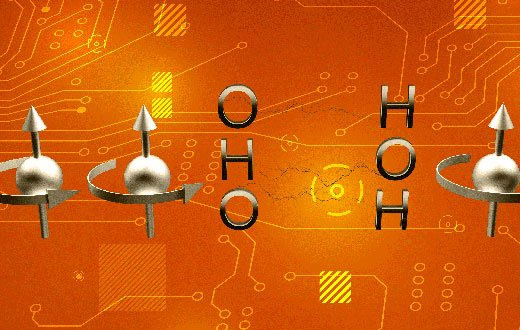
Qubits are the basic building blocks of information processing in quantum technology. An important research question is what material they will actually consist of in technical applications. Molecular spin qubits are considered promising qubit candidates for molecular spintronics, in particular for quantum sensing. The materials studied here can be stimulated by light; this creates a second spin centre and, subsequently, a light-induced quartet state.
Until now, research has assumed that the interaction between two spin centres can only be strong enough for successful quartet formation if the centres are covalently linked. Due to the high effort required to synthesise covalently bonded networks of such systems, their use in application-related developments in the field of quantum technology is severely limited.
Researchers at the Institute of Physical Chemistry at the University of Freiburg and the Institut Charles Sadron at the University of Strasbourg have now been able to show for the first time that non-covalent bonds can allow for efficient spin communication (Nature Chemistry, « Supramolecular dyads as photogenerated qubit candidates »).
To do this, the scientists used a model system consisting of a perylenediimide chromophore and a nitroxide radical that self-assemble into functional units in solution by means of hydrogen bonds. The key advantage: the formation of an ordered network of spin qubits could now be achieved using supramolecular approaches, which would enable the testing of new molecule combinations and system scalability without major synthetic effort.
Qubits are the basic building blocks of information processing in quantum technology. An important research question is what material they will actually consist of in technical applications. Molecular spin qubits are considered promising qubit candidates for molecular spintronics, in particular for quantum sensing. The materials studied here can be stimulated by light; this creates a second spin centre and, subsequently, a light-induced quartet state.
Until now, research has assumed that the interaction between two spin centres can only be strong enough for successful quartet formation if the centres are covalently linked. Due to the high effort required to synthesise covalently bonded networks of such systems, their use in application-related developments in the field of quantum technology is severely limited.
Researchers at the Institute of Physical Chemistry at the University of Freiburg and the Institut Charles Sadron at the University of Strasbourg have now been able to show for the first time that non-covalent bonds can allow for efficient spin communication (Nature Chemistry, « Supramolecular dyads as photogenerated qubit candidates »).
To do this, the scientists used a model system consisting of a perylenediimide chromophore and a nitroxide radical that self-assemble into functional units in solution by means of hydrogen bonds. The key advantage: the formation of an ordered network of spin qubits could now be achieved using supramolecular approaches, which would enable the testing of new molecule combinations and system scalability without major synthetic effort.
